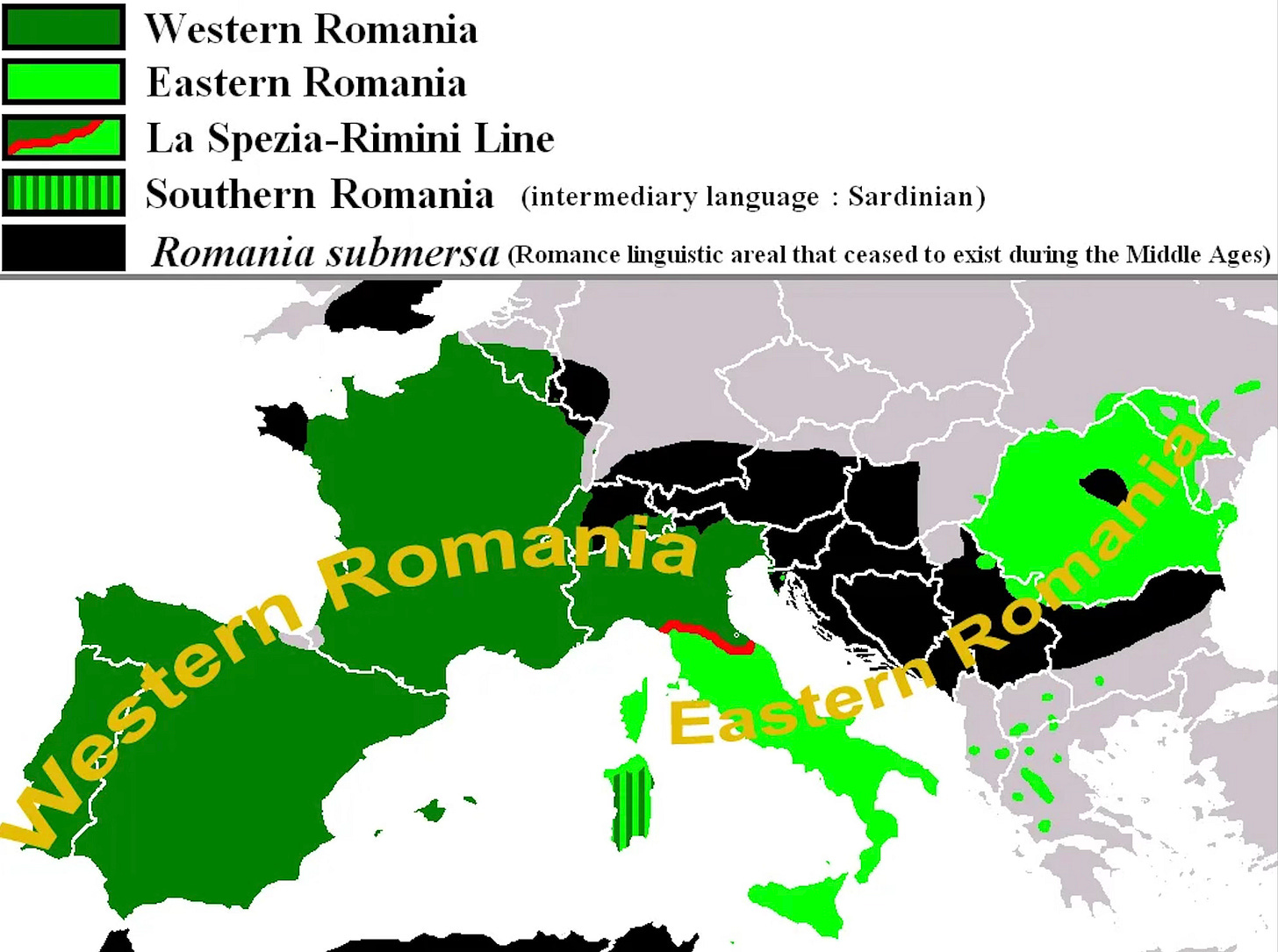The Romance languages evolved from Vulgar Latin, but their divergence is marked by isoglosses - linguistic boundaries that highlight differences in phonology, grammar, or vocabulary. One prominent isogloss is the La Spezia–Rimini Line in northern Italy, which roughly follows the northern Apennine Mountains and separates Western Romance languages (such as Spanish, French, Portuguese, and Northern Italian dialects) from Eastern Romance languages (including Southern Italian and Romanian). This boundary explains key linguistic features:
Plural Formation:
Western languages use /s/ to form plurals (ex. libros for books)
Eastern languages use vowels to form plurals (ex. amici for friends)
Pronunciation Differences (ci/ce palatalization):
Historical: centum (Latin) vs cento (Italian) for hundred
Contemporary: cena (dinner) in Spanish vs cena in Italian
Gemination (Doubling of Consonants):
Traditional: palla (bowl) vs pala (shovel) in Italian
Dialectical/Regional: doppio (double) is pronounced dopio in Northern Italy
Such isoglosses and distinctions are shaped by historical and political factors, including the influence of pre-Latin languages (ex, Estruscan, Gaulish, Iberian), geographical division (ex, Cisalpine Gaul & Gothic Line), the migrations of peoples, and regional isolation. These linguistic boundaries reveal not only the diversity within the Romance family but also the historical and cultural forces that shaped Latin Europe's linguistic landscape.
Notes: La Spezia-Rimini Line was developed in 1950 by noted German linguist Walter von Wartburg. Preceeding him was Gerhard Rohlfs, another German linguist, who developed the Roma-Ancona Line in 1937, an isogloss for central and southern Italy.



